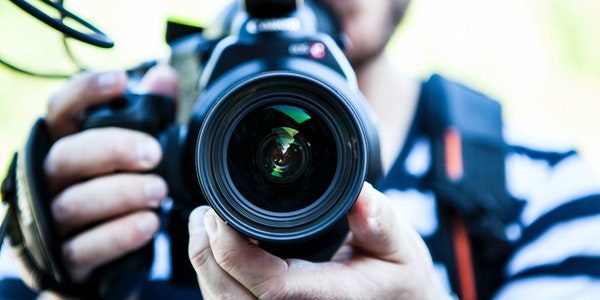Table of Contents
1. Double flash + Soft Box to Create Butterfly Light
The lighting method in which two flashes with soft boxes are placed at 45° left and right in front of the model is generally called the “butterfly lighting method” by photographers. This lighting method makes full use of the characteristics of soft light. Its characteristics are just like its name, it is softer, with less contrast, and can soften the skin of the characters. It is generally suitable for shooting female portraits.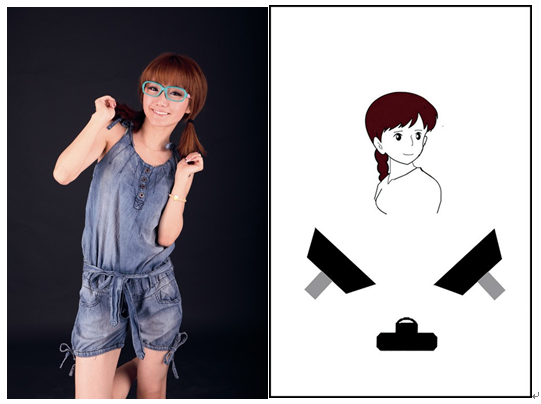
An example of butterfly light shooting.
Aperture: F8, Exposure time: 1/200s, Sensitivity: ISO100, Focal length: 75mm
“Butterfly light” is a primary lighting method, which has certain shortcomings and limitations. First of all, it is difficult for Asians with black hair to show rich details when shooting with this lighting method. Secondly, although the soft skin without changes in light and shadow is eye-catching, it lacks realism and tends to give people a flashy, sweet and greasy visual experience.
2. Side Single Light and Headlight
Emphasizing the three-dimensional effect of the side single lamp and the creation of the headlight
In the previous example, the lighting method of two flashes and soft box is mostly used to take sweet-style portrait photos. But the light effect is relatively flat, and another result is that the three-dimensional sense of the characters is not strong. In this example, the photographer uses a flash and a soft box to light from the front. As a result, the light-receiving surface of the character is uneven from left to right. This can help produce a strong sense of three-dimensionality.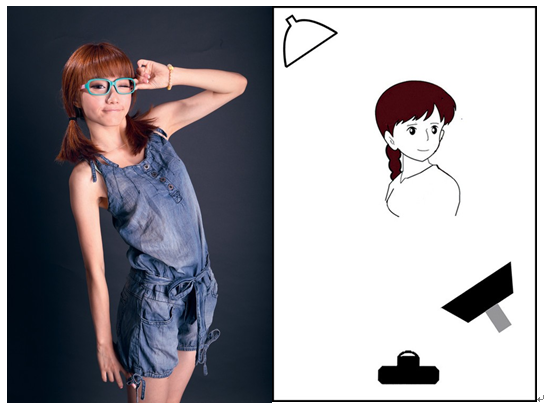
Example of shooting with side single-lamp lighting.
Aperture: F10 Exposure time: 1/200s Sensitivity: ISO100 Focal length: 59mm
At the same time, the photographer also set up a flash for the model to brighten the hair. Headlight is a kind of effect light, usually hard light is used to create it.
The black hair of Asians is often overlooked in studio shooting, resulting in dead blackness and loss of details. Therefore, the creation of headlights is even more important.
In this example, the photographer set up a high-height flash with a standard cover at the rear right of the model. Light it towards the head of the model to create the highlights and reflections of the model’s hair in the picture.
3. Use a Soft Box to Create a High-gloss Background
This high-profile shooting method is very interesting. The photographer guides the model to lean against a large soft box while setting up another large soft box in front of the model. Use the first soft box and the subsequent flashes as the background, and “face to face” with the soft box of the other flash. When the photographer presses the shutter, the camera flashes the flash behind the model through a flash trigger. The soft box becomes a pure background in the picture under strong light. 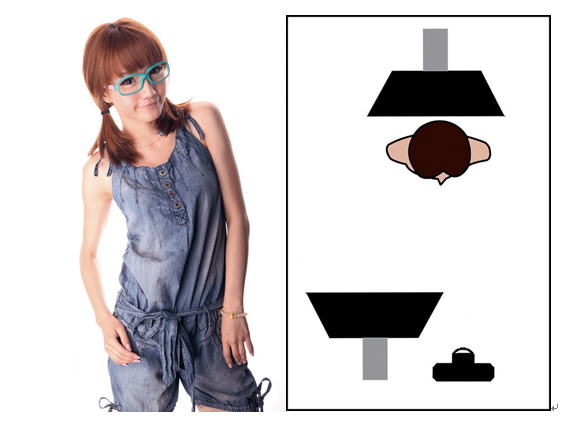
Example of shooting with softbox lighting.
Aperture: F8, Exposure time: 1/200s, Sensitivity: ISO100, Focal length: 65mm
At the same time, the silhouette and skin texture of the model are outlined by highlights. Highlights can even produce a “overlight” effect on the model’s skin. This method of lighting can express a sense of holiness and mystery. There are two points to note. First, this lighting method requires a higher quality of the photographer’s lens. Secondly, this lighting method is not conducive to expressing colorful shooting subjects.
4. Double Lights to Create Head light, Single Light to Fill Light on the Front
The directionality of the hard light and its outline characteristics for the model and the subject’s lines can also create a character’s headlight. In this example, the photographer uses two flashes to project hard light on the model at a certain angle from the back of the model. This effectively creates the model’s golden hair glow. At the same time, the contour of the model is clearer and the three-dimensional effect is stronger. At the same time, on the front of the model, the photographer used a third flash with a soft box to fill in the front of the model to portray the details of the model’s face. 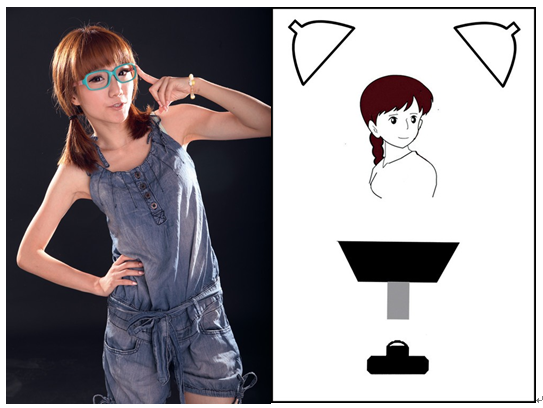
Examples of shooting with three lights
Aperture: F8, Exposure time: 1/200s, Sensitivity: ISO100, Focal length: 75mm
This lighting method is more complicated. In order to better express the headlight, the photographer should set the position of the two flashes behind the model slightly higher. In the selection of the lens, a lens with excellent anti-glare quality must be selected. and a suitable lens hood must be installed to prevent the glare of the rear flash from entering the lens and affecting the image quality of digital photos.
5. The Combination of Main Light and Auxiliary Light and the Application of Reflector
In this example, the photographer used the lighting method of arranging a flash with a soft box on the left front and right rear of the model. 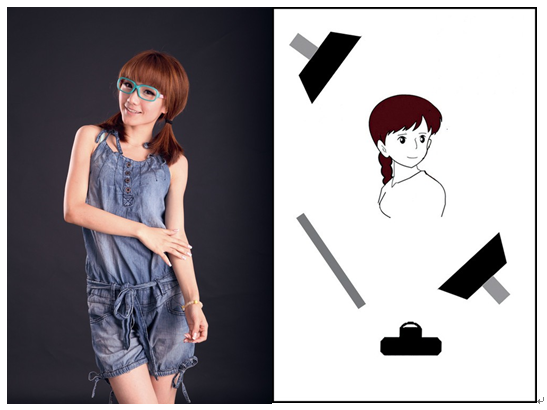
Examples of shooting using reflectors.
Aperture: F9, Exposure time: 1/200s, Sensitivity: ISO100, Focal length: 75mm
The flash on the left front of the model is used as the main light to illuminate the main body of the model. Since the lamp position is 45° from the model, it can create the three-dimensional sense of the model’s facial features. At the same time, the flash on the right rear of the model played a role in delineating the body line of the model. That makes the outline of the left part of the model full of light in the picture.
In the live shooting, in order to create the model’s three-dimensional effect while not making the light ratio of the picture too large. The photographer placed a large-area reflector on the right front side of the model to fill the model with light. This has achieved a more desirable effect.
In the practice of lighting in the studio, the photographer needs to adjust the number of lights, light positions. So do the number of reflectors according to the quality of the shooting effect. Through the contrast effect of real shots, the photographer finally chooses the lighting method with the most ideal performance.
